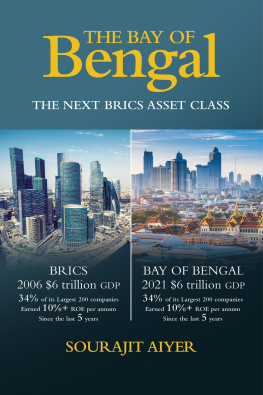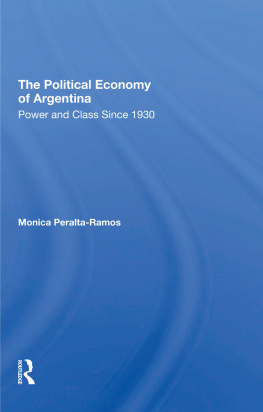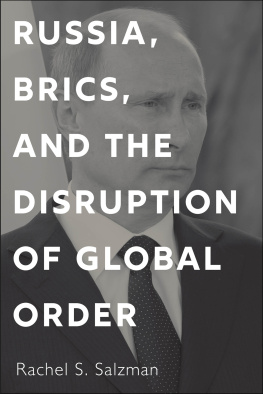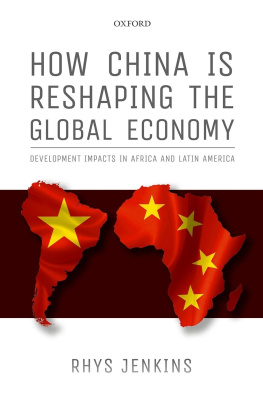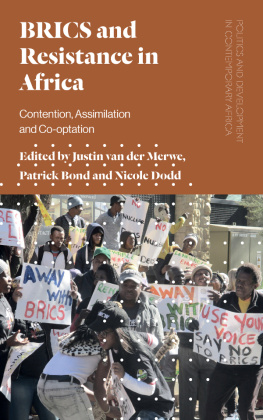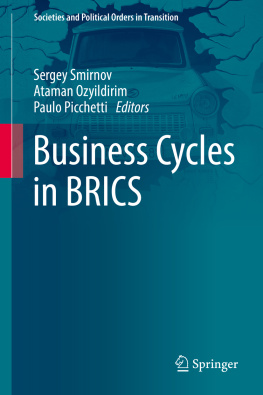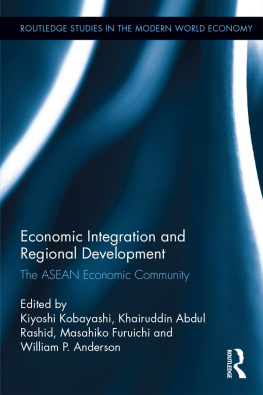Contents

THE BAY OF
Bengal
THE NEXT BRICS ASSET CLASS
To the memory of my parents,
Soma and Ranajit
THE BAY OF
Bengal
THE NEXT BRICS ASSET CLASS
SOURAJIT AIYER

Copyright Sourajit Aiyer 2018.
The right of Sourajit Aiyer to be identified as Author of this work has been asserted in accordance with the Copyright, Designs and Patents Act 1988.
2 4 6 8 10 9 7 5 3 1
ISBN 9781845199449 (Print)
ISBN 9781782845669 (PDF)
ISBN 9781782845645 (EPUB)
ISBN 9781782845652 (Kindle)
First published in Great Britain in 2018 by
SUSSEX ACADEMIC PRESS
PO Box 139, Eastbourne BN24 9BP
Distributed in North America by
SUSSEX ACADEMIC PRESS
Independent Publishers Group
814 N. Franklin Street
Chicago, IL 60610
All rights reserved. Except for the quotation of short passages for the purposes of criticism and review, no part of this publication mretrieval system, may be reproduced, stored in a or transmitted, in any form or by any means, electronic, mechanical, photocopying, recording or otherwise, without the prior permission of the publisher.
British Library Cataloguing in Publication Data
A CIP catalogue record for this book is available from the British Library.
Library of Congress Cataloging-in-Publication Data
Names: Aiyer, Sourajit, author.
Title: The Bay of Bengal : the next BRICs asset class / Sourajit Aiyer.
Description: Brighton ; Portland : Sussex Academic Press, [2018] | Includes bibliographical references and index.
Identifiers: LCCN 2018021531 | ISBN 9781845199449 (pbk : alk. paper)
Subjects: LCSH: Economic developmentBengal, Bay of, Region. | Investments, ForeignBengal, Bay of, Region. | Bengal, Bay of, RegionForeign economic relations. | Bengal, Bay of, RegionCommerce.
Classification: LCC HC430.6 .A689 2018 | DDC 330.9182/4dc23
LC record available at https://lccn.loc.gov/2018021531

Typeset & designed by Sussex Academic Press, Brighton & Eastbourne.
Printed by TJ International, Padstow, Cornwall.
Contents
Abbreviations
Africa (Big Economies) South Africa, Nigeria, Egypt, Morocco, Ethiopia, Kenya, Tanzania, Ghana (excludes the predominant oil economies of Sudan, Algeria and Angola)
(Economic comparisons* include all the above-mentioned countries. Corporate comparisons** exclude Ethiopia and Ghana due to data unavailability)
APAC Asia Pacific
ASEAN The Philippines, Thailand, Indonesia, Malaysia, Vietnam, Singapore, Laos, Cambodia, Myanmar and Brunei
(Economic comparisons include all the above-mentioned countries. Corporate comparisons exclude Malaysia, Laos, Brunei, Cambodia and Myanmar)
Bay of Bengal India, Thailand, Bangladesh, Indonesia, Sri Lanka, Vietnam, Myanmar, Nepal and Bhutan
(Economic comparisons include all the above-mentioned countries. Corporate comparisons exclude Myanmar, Nepal and Bhutan)
BIMSTEC India, Thailand, Bangladesh, Sri Lanka, Myanmar, Nepal and Bhutan
(Economic comparisons include all the above-mentioned countries. Corporate comparisons exclude Myanmar, Nepal and Bhutan)
BRICS Brazil, Russia, India, China and South Africa
(Economic and corporate comparisons include all the above-mentioned countries)
BRIC Brazil, Russia, India and China
CAGR Compounded average growth rate
CIA Central Intelligence Agency
CIVETS Colombia, Indonesia, Vietnam, Egypt, Turkey and South Africa
(Economic and corporate comparisons include all the above-mentioned countries)
East Africa Kenya, Tanzania, Rwanda, Uganda, Burundi and Ethiopia
(Economic comparisons include all the above-mentioned countries. Corporate comparisons exclude Rwanda, Uganda and Burundi). Also note Ethiopia is not part of the East African Council, the regional economic bloc, but is included here as it is a dynamic economy in Eastern Africa
East Europe Russia, Hungary, Czech Republic, Romania, Poland, Ukraine, Belarus, Moldova, Slovakia, Slovenia, Serbia, Bosnia, Croatia, Albania, Macedonia, Montenegro, Lithuania, Latvia, Estonia, Bulgaria, Georgia, Armenia and Azerbaijan
(Economic comparisons include all the above-mentioned countries. Not included in corporate comparisons)
ETF Exchange traded fund
EXIM Export Import Bank of India
GCC Saudi Arabia, UAE, Qatar, Oman, Kuwait and Bahrain
(Economic comparisons include all the above-mentioned countries. Corporate comparisons exclude Bahrain)
GDP Gross Domestic Product
ILO International Labour Organisation
IMF International Monetary Fund
MENA Egypt, Morocco, Sudan, Algeria, Jordan, Iran, Iraq, Saudi Arabia, USA, Qatar, Oman, Kuwait, Bahrain and Israel
(Economic comparisons include all the above-mentioned countries. Corporate comparisons exclude Sudan, Algeria, Jordan, Iran, Iraq and Bahrain)
MHRD Ministry of Human Resources Development
MINT Economic and corporate comparisons include Mexico, Indonesia, Nigeria and Turkey
(Economic and corporate comparisons include all the above-mentioned countries)
MSCI EM Index MSCI Emerging Markets Index; Chile, Colombia, India, China, Malaysia, South Korea, Taiwan, The Philippines, Thailand, Poland, South Africa, Russia, Egypt, Indonesia, Mexico, Nigeria, Pakistan, Turkey, UAE, Qatar, Hungary, Greece, Czech Republic and Peru
(Economic comparisons include all the above-mentioned countries. Corporate comparisons exclude Peru, Malaysia, Taiwan, Poland, Greece, Czech Republic and Hungary)
NEXT 11 Bangladesh, Egypt, Indonesia, Iran, Mexico, Nigeria, Pakistan, The Philippines, Turkey, South Korea and Vietnam
(Economic comparisons include all the above-mentioned countries. Corporate comparisons exclude Iran)
PPP Purchasing Power Parity
PSE Public sector enterprises
RERA Real Estate (Regulation and Development) Act, 2016
ROE Return on equity
Rs. Indian Rupees
Russia and CIS Russia, Ukraine, Belarus, Moldova, Lithuania, Latvia, Estonia, Georgia, Armenia, Azerbaijan, Kazakhstan, Uzbekistan, Kyrgyz Republic, Turkmenistan and Tajikistan
(Economic comparisons include all the above-mentioned countries. Does not include corporate comparisons)
RVC Regional value chains
SAARC India, Pakistan, Bangladesh, Maldives, Sri Lanka, Afghanistan, Nepal and Bhutan
(Economic comparisons include all the above-mentioned countries. Corporate comparisons exclude Maldives, Afghanistan, Nepal and Bhutan)
SEWA Self Employed Womens Association
Pacific Alliance Mexico, Chile, Colombia and Peru
(Economic comparisons include all the above-mentioned countries. Corporate comparisons exclude Peru)
UAE United Arab Emirates
UK United Kingdom
USA United States of America
US$ American Dollar
WEO World Economic Outlook (IMF Publication)
WFE World Federation of Exchanges
WITS World Integrated Trade Solutions (World Bank Publication)
YoY Year on year
* Economic data refers to all the economic metrics like GDP, per capita, savings, investments, population, etc.
** Corporate data refers to financial information of the companies like ROE, profit, revenue, debt, etc.

